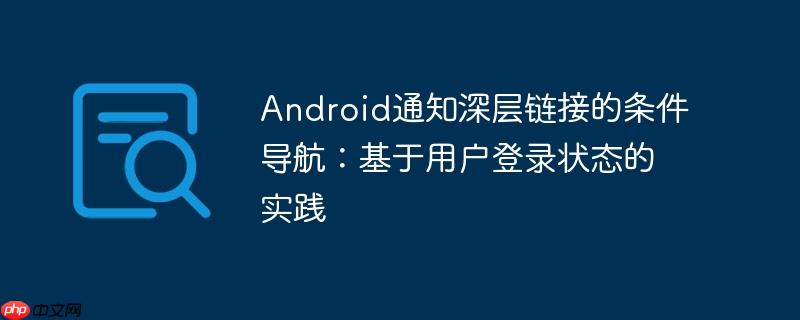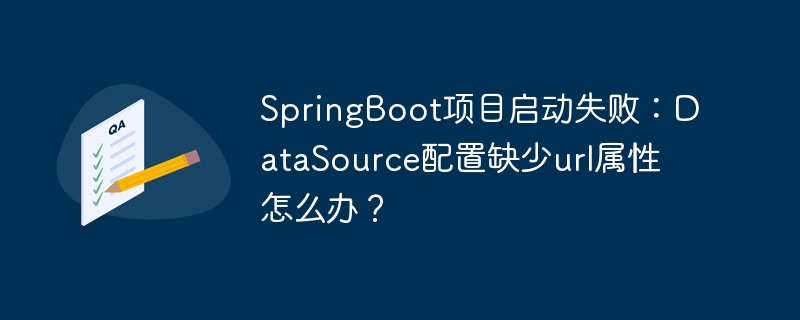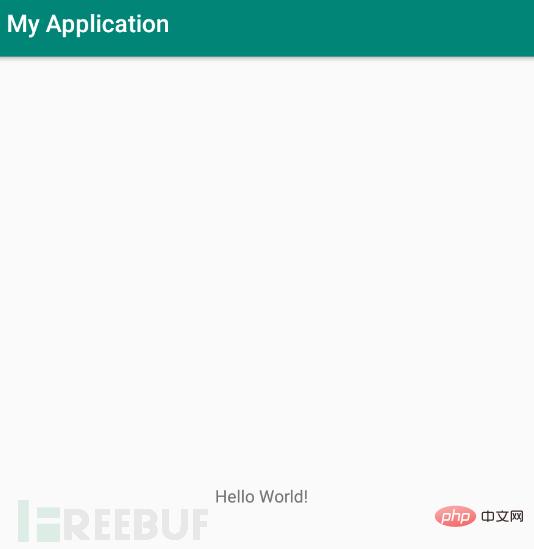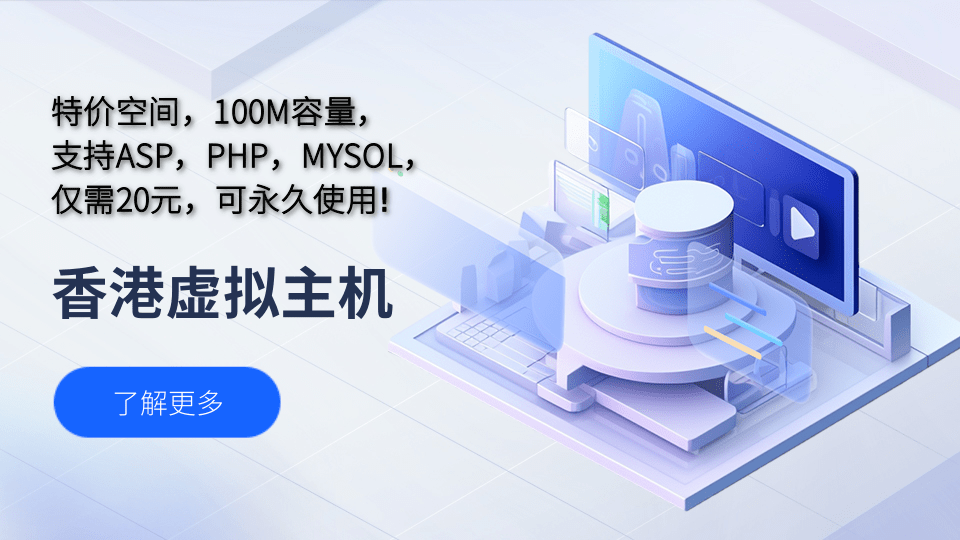
本文探讨了android通知深层链接在点击后如何实现条件导航。针对PendingIntent立即执行的特性,文章提出了一种优雅的策略:让深层链接首先导航至一个中间认证/启动片段。该片段负责检查用户登录状态,并据此决定后续的导航路径,从而在不干扰PendingIntent原始行为的前提下,灵活实现基于业务逻辑的条件跳转,优化用户体验。
理解问题:PendingIntent的即时性
在Android开发中,当用户点击通知时,通常会触发一个PendingIntent来执行预定义的操作,例如使用NavDeepLinkBuilder进行深层链接导航。PendingIntent的特性是其一旦被触发,便会立即执行其封装的意图。这意味着我们无法在PendingIntent被执行之前,直接插入一个条件判断(如用户是否登录)来决定是否继续执行导航,或者将其重定向到另一个页面。
传统的思路是尝试在PendingIntent执行前进行拦截或修改其行为,但这往往复杂且不符合PendingIntent的设计哲学。例如,重写onNewIntent方法可能无法满足需求,因为它在Activity启动后才触发,而我们希望在导航开始前就进行判断。
解决方案:中间片段(Intermediate Fragment)策略
解决此问题的最佳实践是:不要试图阻止或修改PendingIntent的执行,而是让PendingIntent始终导航到一个特定的“中间”片段(或Activity)。这个中间片段的职责就是执行所有的预检查(例如用户登录状态),然后根据检查结果决定最终的导航目的地。
1. 修改 NavDeepLinkBuilder 的目标
首先,你需要确保你的通知PendingIntent不再直接指向最终的目标片段,而是指向一个专门用于认证或初始化的中间片段。
import android.app.NotificationChannel import android.app.NotificationManager import android.app.PendingIntent import android.content.Context import android.os.Build import androidx.core.app.NotificationCompat import androidx.navigation.NavDeepLinkBuilder import com.example.yourapp.R // 假设你的R文件路径 fun showConditionalNotification(context: Context) { val channelId = "conditional_nav_channel" val notificationId = 1001 // 1. 创建一个指向 AuthCheckFragment 的 PendingIntent // 假设 R.id.authCheckFragment 是你用于检查登录状态的中间片段 val pendingIntent = NavDeepLinkBuilder(context) .setGraph(R.navigation.nav_graph) // 你的导航图 .setDestination(R.id.authCheckFragment) // 指向中间片段 // 如果需要传递原始深层链接的参数,可以在这里添加,AuthCheckFragment 会接收到 // .setArguments(bundleOf("originalDestinationId" to R.id.your_final_fragment)) .createPendingIntent() // 创建通知渠道 (Android 8.0+) if (Build.VERSION.SDK_INT >= Build.VERSION_CODES.O) { val channel = NotificationChannel( channelId, "条件导航通知", NotificationManager.IMPORTANCE_DEFAULT ).apply { description = "用于演示条件导航的通知" } val notificationManager: NotificationManager = context.getSystemService(Context.NOTIFICATION_SERVICE) as NotificationManager notificationManager.createNotificationChannel(channel) } // 构建通知 val notification = NotificationCompat.Builder(context, channelId) .setSmallIcon(R.drawable.ic_launcher_foreground) // 你的通知图标 .setContentTitle("重要通知") .setContentText("点击查看详情并进行条件导航") .setPriority(NotificationCompat.PRIORITY_DEFAULT) .setContentIntent(pendingIntent) // 设置 PendingIntent .setAutoCancel(true) // 用户点击后自动取消通知 .build() // 显示通知 val notificationManager = context.getSystemService(Context.NOTIFICATION_SERVICE) as NotificationManager notificationManager.notify(notificationId, notification) }
2. 实现中间片段 (AuthCheckFragment)
这个中间片段将负责执行登录检查和后续的条件导航。
import android.os.Bundle import android.view.LayoutInflater import android.view.View import android.view.ViewGroup import androidx.fragment.app.Fragment import androidx.navigation.fragment.findNavController import androidx.navigation.navOptions import com.example.yourapp.R // 假设你的R文件路径 class AuthCheckFragment : Fragment() { override fun onCreateView( inflater: LayoutInflater, container: ViewGroup?, savedInstanceState: Bundle? ): View? { // 通常这个片段不需要UI,或者可以显示一个加载指示器 return inflater.inflate(R.layout.fragment_auth_check, container, false) } override fun onViewCreated(view: View, savedInstanceState: Bundle?) { super.onViewCreated(view, savedInstanceState) val navController = findNavController() // 模拟登录状态检查 val isLoggedIn = checkUserLoginStatus() // 调用你的实际登录检查逻辑 if (isLoggedIn) { // 用户已登录,导航到目标页面 // 如果 AuthCheckFragment 接收了原始目标ID作为参数,可以在这里使用 // val originalDestinationId = arguments?.getInt("originalDestinationId") ?: R.id.homeFragment navController.navigate(R.id.homeFragment, null, navOptions { // 清除 AuthCheckFragment 和其之上的所有片段,防止用户返回到此中间页 popUpTo(R.id.authCheckFragment) { inclusive = true } }) } else { // 用户未登录,导航到登录页面 navController.navigate(R.id.loginFragment, null, navOptions { // 清除 AuthCheckFragment 和其之上的所有片段 popUpTo(R.id.authCheckFragment) { inclusive = true } }) } } /** * 实际的用户登录状态检查逻辑。 * 这可能涉及到检查 SharedPreferences、数据库、ViewModel中的用户状态等。 */ private fun checkUserLoginStatus(): Boolean { // TODO: 实现你的实际登录检查逻辑 // 例如: // return MyAuthManager.getInstance(requireContext()).isLoggedIn() return true // 示例:假设用户已登录 } }
fragment_auth_check.xml (可选,可以是一个空的布局或加载指示器):
<?xml version="1.0" encoding="utf-8"?> <FrameLayout xmlns:android="http://schemas.android.com/apk/res/android" android:layout_width="match_parent" android:layout_height="match_parent" android:background="@android:color/white"> <!-- 可以放置一个加载指示器 --> <ProgressBar android:layout_width="wrap_content" android:layout_height="wrap_content" android:layout_gravity="center" /> </FrameLayout>
3. 配置导航图 (nav_graph.xml)
确保你的导航图中包含 authCheckFragment、homeFragment 和 loginFragment。
<?xml version="1.0" encoding="utf-8"?> <navigation xmlns:android="http://schemas.android.com/apk/res/android" xmlns:app="http://schemas.android.com/apk/res-auto" xmlns:tools="http://schemas.android.com/tools" android:id="@+id/nav_graph" app:startDestination="@id/homeFragment"> <!-- 你的应用启动目的地 --> <fragment android:id="@+id/homeFragment" android:name="com.example.yourapp.HomeFragment" android:label="HomeFragment" tools:layout="@layout/fragment_home" /> <fragment android:id="@+id/loginFragment" android:name="com.example.yourapp.LoginFragment" android:label="LoginFragment" tools:layout="@layout/fragment_login" /> <fragment android:id="@+id/authCheckFragment" android:name="com.example.yourapp.AuthCheckFragment" android:label="AuthCheckFragment" tools:layout="@layout/fragment_auth_check"> <!-- 如果需要从通知传递参数到 AuthCheckFragment,可以在这里定义 arg --> <!-- <argument android:name="originalDestinationId" app:argType="integer" android:defaultValue="-1" /> --> </fragment> <!-- 其他片段 --> </navigation>
注意事项与最佳实践
- 返回栈管理: 在AuthCheckFragment中进行导航时,使用navOptions { popUpTo(R.id.authCheckFragment) { inclusive = true } }至关重要。这确保了AuthCheckFragment不会留在返回栈中,避免用户在登录或跳转后按返回键又回到这个中间检查页。
- 用户体验: 如果登录检查涉及到网络请求,AuthCheckFragment应该显示一个加载指示器,以避免空白屏幕或卡顿感。
- 多目标处理: 如果你的通知可能指向不同的最终目的地(例如,一个通知到订单详情,另一个到消息中心),你可以通过在NavDeepLinkBuilder中向AuthCheckFragment传递一个参数(例如,目标片段的ID或一个标识符),然后在AuthCheckFragment中根据这个参数进行条件导航。
- 深层链接参数传递: 如果原始深层链接需要向最终目标片段传递数据,这些数据也应该首先传递给AuthCheckFragment,然后由AuthCheckFragment在导航到最终目标时再传递过去。
- 单 Activity 架构: 这种方法在采用单 Activity 多 Fragment 的导航架构中表现最佳,因为所有导航都由同一个NavController管理。
总结
通过引入一个中间片段来处理通知深层链接的条件导航,我们能够优雅地绕过PendingIntent立即执行的限制。这种模式将复杂的业务逻辑判断从PendingIntent的触发链中分离出来,使其在专门的Fragment中得到处理,从而提高了代码的可维护性和用户体验的流畅性。它确保了无论用户是否登录,都能得到恰当的引导,要么直接进入目标页面,要么被重定向到登录流程。



















